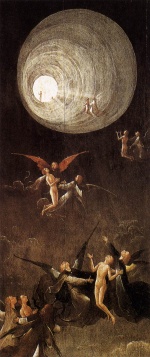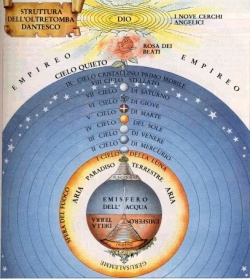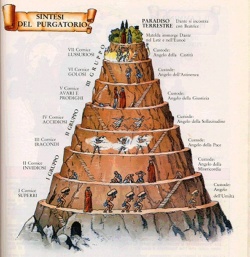Diferencia entre revisiones de «Vida después de la muerte»
(Traducción, enlaces y referencias) |
Sin resumen de edición |
||
| Línea 1: | Línea 1: | ||
'''Vida después de la Muerte''' | '''Vida después de la Muerte''' | ||
De acuerdo con las enseñanzas Teosóficas después de la muerte del cuerpo, la consciencia experimenta una serie de transformaciones. Las tendencias, emociones, pensamientos, memorias, y aspiraciones que fueron parte de la personalidad son separadas. Cualquier cosa que perteneciera al aspecto completamente personal y egoísta es descartado, en tanto que todo lo que fue de naturaleza generosa y altruista es preservada y asimilada por el alma. En los escritos de H.P. Blavatsky y los Maestros de Sabiduría la descripción más frecuente de los diferentes estados después de la muerte física incluye: a) la "lucha mortal", b) periodo de gestación, c) Devachan, y d) reencarnación. | De acuerdo con las enseñanzas Teosóficas después de la muerte del cuerpo, la consciencia experimenta una serie de transformaciones. Las tendencias, emociones, pensamientos, memorias, y aspiraciones que fueron parte de la personalidad son separadas. Cualquier cosa que perteneciera al aspecto completamente personal y egoísta es descartado, en tanto que todo lo que fue de naturaleza generosa y altruista es preservada y asimilada por el alma. En los escritos de H.P. Blavatsky y los Maestros de Sabiduría la descripción más frecuente de los diferentes estados después de la muerte física incluye: a) la "lucha mortal", b) periodo de gestación, c) Devachan, y d) reencarnación | ||
.[[File:Ascent of the Blessed.jpg|right|150px|thumb|Ascent of the Blessed by Bosch]] | |||
According to the [[Theosophy|Theosophical]] teachings after the [[death]] of the body, [[consciousness]] undergoes a series of transformations. The tendencies, emotions, thoughts, memories, and aspirations that were part of the [[Principle#Individuality_and_personality|personality]] are sorted out. Anything that belonged to the entirely personal and selfish aspect is discarded, while all that was of a generous or unselfish nature is preserved and assimilated by the [[Soul#Human soul|soul]]. In the writings of [[Helena Petrovna Blavatsky|H. P. Blavatsky]] and the [[Masters of Wisdom]] the most frequent description of the different stages after physical death include: a) the "death struggle", b) [[gestation period]], c) [[Devachan]], and d) [[reincarnation]]. | |||
== General description == | |||
[[File:Divina Comedia.jpg|left|250px|thumb|After death landscape according to Dante]] | |||
In the [[Theosophy|Theosophical]] view, [[death]] is not the end of conscious experience but, on the contrary, it is the beginning of a wider consciousness. [[Helena Petrovna Blavatsky|H. P. Blavatsky]] said: | |||
<blockquote>We accept consciousness after death, and say the real consciousness and the real freedom of the [[Ego]] or the [[soul]] begins only after the physical death of man. It is then that it is no longer impeded by terrestrial matter that it is free, that it can perceive everything.<ref>Michael Gomes (transcriber), ''The Secret Doctrine Commentaries'' (The Hague: I.S.I.S. foundation, 2010), 44.</ref></blockquote> | |||
What is known as "death" involves the departure of the [[Prāṇa|vital principle]] and the consequent dissolution of the [[Sthūla-śarīra|physical body]] along with its [[Liṅga-śarīra|astral double]] of etheral matter. After this, comes a period of dissolution of the [[Soul#Animal soul|animal soul]] and the personal aspect of the [[Soul#Animal soul|human soul]] in [[Kāmaloka]]. Finally, the spiritual aspect of the human soul is assimilated by the [[Soul#Spiritual soul|spiritual soul]] in [[Devachan]]. In Mme. Blavatsky's words: | |||
<blockquote>Soul being a generic term, there are in men three aspects of Soul - the terrestrial, or animal; the Human Soul; and the Spiritual Soul; these, strictly speaking, are one Soul in its three aspects. Now of the first aspect nothing remains after death; of the second (nous or [[Manas]]) only its divine essence if left unsoiled survives, while the third in addition to being immortal becomes consciously divine, by the assimilation of the higher Manas.<ref>Helena Petrovna Blavatsky, "The Key to Theosophy" (Pasadena, CA: Theosophical University Press, 1972), 121-122.</ref></blockquote> | |||
The [[Soul#Spiritual soul|spiritual soul]] or [[Buddhi]] is of a universal nature and, by itself, it lacks the element of self-awareness. After death it can become conscious of its own divine nature by assimilating the spiritual elements of the mental consciousness, if the person ever exercised this aspect of his mind. | |||
The different stages have been described by [[Koot Hoomi|Master K.H.]] in [[Mahatma Letter No. 68#Page 15|one of his letters]] as follows: | |||
<blockquote>The period between death and rebirth . . . may last from a few years to a [[kalpa]]. It is divided into three sub-periods (1) when the [[Ego]] delivered of its mortal coil enters into [[Kāmaloka|Kama-Loka]] (the abode of [[Elementary|Elementaries]]); (2) when it enters into its "Gestation State"; (3) when it is reborn in the [[Devachan#Rupa and Arupa Lokas|Rupa-Loka]] of Deva-Chan. Sub-period (1) may last from a few minutes to a number of years — the phrase "a few years" becoming puzzling and utterly worthless without a more complete explanation; Sub-period (2) is "very long"; as you say, longer sometimes than you may even imagine, yet proportionate to the Ego's spiritual stamina; Sub-period (3) lasts in proportion to the good [[Karma|KARMA]], after which the [[monad]] is again [[reincarnation|reincarnated]].<ref>Vicente Hao Chin, Jr., ''The Mahatma Letters to A.P. Sinnett in chronological sequence'' No. 68 (Quezon City: Theosophical Publishing House, 1993), 194.</ref></blockquote> | |||
== The "Death struggle" == | |||
[[File:Purgatorio de dante.jpg|right|250px|thumb|Purgatory according to Dante]] | |||
After the disposal of the three lower [[principle]]s of consciousness that happen during physical [[death]], the four principles remaining | |||
Revisión del 21:23 3 dic 2019
Vida después de la Muerte
De acuerdo con las enseñanzas Teosóficas después de la muerte del cuerpo, la consciencia experimenta una serie de transformaciones. Las tendencias, emociones, pensamientos, memorias, y aspiraciones que fueron parte de la personalidad son separadas. Cualquier cosa que perteneciera al aspecto completamente personal y egoísta es descartado, en tanto que todo lo que fue de naturaleza generosa y altruista es preservada y asimilada por el alma. En los escritos de H.P. Blavatsky y los Maestros de Sabiduría la descripción más frecuente de los diferentes estados después de la muerte física incluye: a) la "lucha mortal", b) periodo de gestación, c) Devachan, y d) reencarnación
.
According to the Theosophical teachings after the death of the body, consciousness undergoes a series of transformations. The tendencies, emotions, thoughts, memories, and aspirations that were part of the personality are sorted out. Anything that belonged to the entirely personal and selfish aspect is discarded, while all that was of a generous or unselfish nature is preserved and assimilated by the soul. In the writings of H. P. Blavatsky and the Masters of Wisdom the most frequent description of the different stages after physical death include: a) the "death struggle", b) gestation period, c) Devachan, and d) reincarnation.
General description
In the Theosophical view, death is not the end of conscious experience but, on the contrary, it is the beginning of a wider consciousness. H. P. Blavatsky said:
We accept consciousness after death, and say the real consciousness and the real freedom of the Ego or the soul begins only after the physical death of man. It is then that it is no longer impeded by terrestrial matter that it is free, that it can perceive everything.[1]
What is known as "death" involves the departure of the vital principle and the consequent dissolution of the physical body along with its astral double of etheral matter. After this, comes a period of dissolution of the animal soul and the personal aspect of the human soul in Kāmaloka. Finally, the spiritual aspect of the human soul is assimilated by the spiritual soul in Devachan. In Mme. Blavatsky's words:
Soul being a generic term, there are in men three aspects of Soul - the terrestrial, or animal; the Human Soul; and the Spiritual Soul; these, strictly speaking, are one Soul in its three aspects. Now of the first aspect nothing remains after death; of the second (nous or Manas) only its divine essence if left unsoiled survives, while the third in addition to being immortal becomes consciously divine, by the assimilation of the higher Manas.[2]
The spiritual soul or Buddhi is of a universal nature and, by itself, it lacks the element of self-awareness. After death it can become conscious of its own divine nature by assimilating the spiritual elements of the mental consciousness, if the person ever exercised this aspect of his mind.
The different stages have been described by Master K.H. in one of his letters as follows:
The period between death and rebirth . . . may last from a few years to a kalpa. It is divided into three sub-periods (1) when the Ego delivered of its mortal coil enters into Kama-Loka (the abode of Elementaries); (2) when it enters into its "Gestation State"; (3) when it is reborn in the Rupa-Loka of Deva-Chan. Sub-period (1) may last from a few minutes to a number of years — the phrase "a few years" becoming puzzling and utterly worthless without a more complete explanation; Sub-period (2) is "very long"; as you say, longer sometimes than you may even imagine, yet proportionate to the Ego's spiritual stamina; Sub-period (3) lasts in proportion to the good KARMA, after which the monad is again reincarnated.[3]
The "Death struggle"
After the disposal of the three lower principles of consciousness that happen during physical death, the four principles remaining
- ↑ Michael Gomes (transcriber), The Secret Doctrine Commentaries (The Hague: I.S.I.S. foundation, 2010), 44.
- ↑ Helena Petrovna Blavatsky, "The Key to Theosophy" (Pasadena, CA: Theosophical University Press, 1972), 121-122.
- ↑ Vicente Hao Chin, Jr., The Mahatma Letters to A.P. Sinnett in chronological sequence No. 68 (Quezon City: Theosophical Publishing House, 1993), 194.


